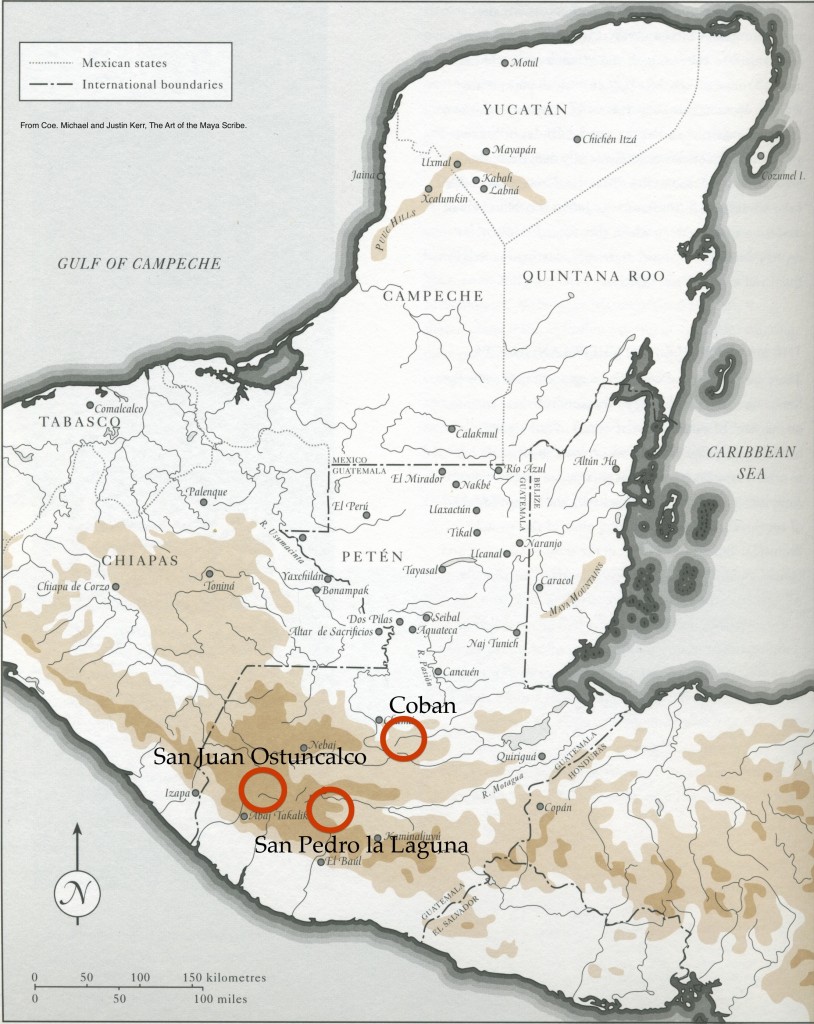
In our last blog we showed two examples of stelae recently erected. This time we report of four more examples: two from Coban, one from Lake Atitlan and one from Ostuncalco in the Department of Quetzaltenango.


In our last blog we showed two examples of stelae recently erected. This time we report of four more examples: two from Coban, one from Lake Atitlan and one from Ostuncalco in the Department of Quetzaltenango.
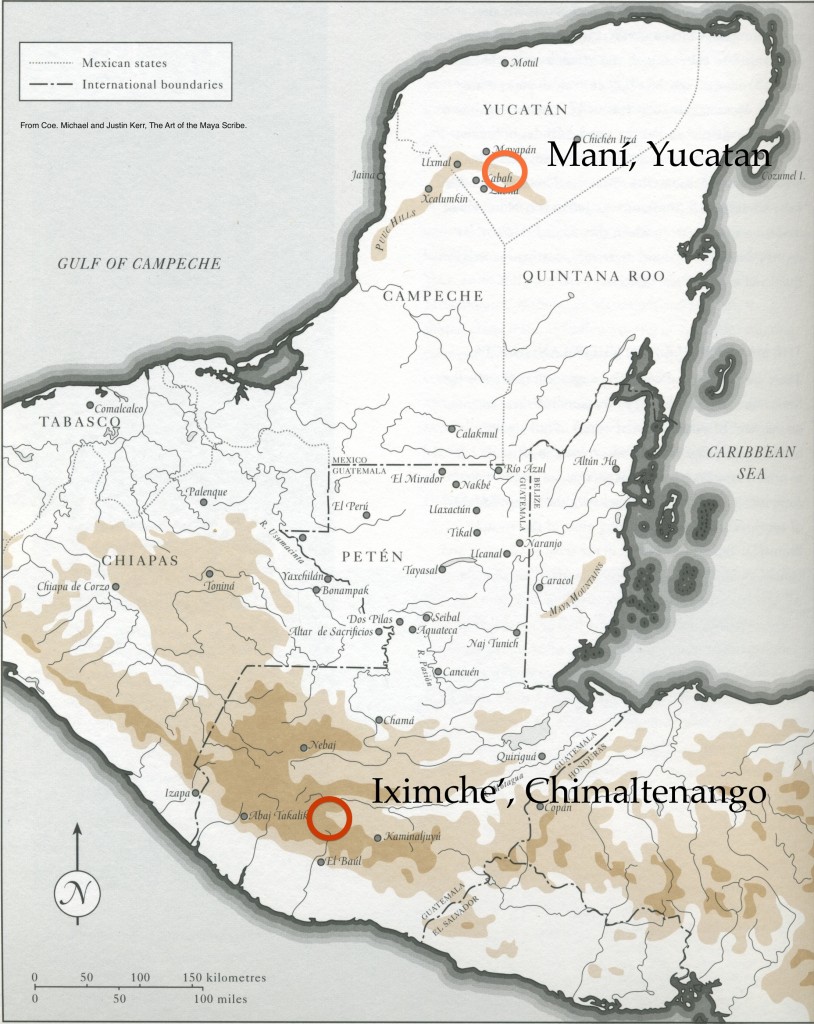
All across the Maya landscape, in recent years, new stelae have been planted. This blog focuses on two: one from Maní in the far northern lowlands, and one from the highlands of Guatemala at Iximche’.
FIRST WORKSHOP FOR ACHI MAYA
by
Andrés Cholotío, Executive Director of PLFM Foundation (Proyecto Linguistico Francisco Marroquín)
Brief overview of the activities at the workshop held in Cubulco, Baja Verapaz, Guatemala, July 14, 2013 [thanks, in part, to a grant from the donors at MAM].
Topics: The calendars from the codices and how to write in glyphs.
Organizer: Andrés Cholotío García and the Achi Linguistic Community.
Instructors: Clemente Maximiliano Peneleu and Hector Xol.
General Objective: Learning the knowledge of our grandmothers and grandfathers by means of deciphering the codices and the writings of the various texts that have been found.
Specific Objective: Develop the knowledge of the calendar found in the codices and apply it to everyday life. Apply the knowledge of epigraphy in today’s writing and discover the legacy of cosmic knowledge in it.
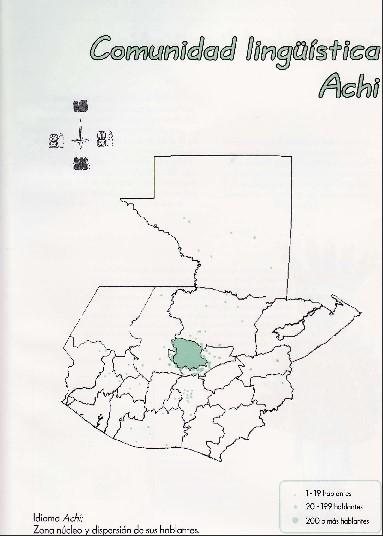
PRIMER TALLER SOBRE GLIFOS PARA MAYA ACHI
por
Andrés Cholotío, Director Ejecutivo de la Fundación PLFM (Proyecto Linguistico Francisco Marroquín)
Breve resumen del las actividades en el taller desarrollados en Cubulco, Baja Verapaz el día 14 de julio del 2013 [gracias, en parte, a una beca de los donadores de MAM].
Temas: Los calendarios desde los códices y como escribir en glifos.
Coordinación: Andrés Cholotío García y la comunidad lingüística Achi
Expositores: Clemente Maximiliano Peneleu y Hector Xol.
Objetivo General: Desarrollar el aprendizaje de los conocimientos de nuestras abuelas y abuelos mediante el desciframiento en los códices y escrituras en los diferentes escritos encontrados.
Objetivo Específico: Desarrollar el conocimiento del calendario que se encuentra en los códices y así aplicar en la vida cotidiana. Aplicar el conocimiento de la epigrafía en la escritura actual y descubrir el legado de conocimientos cósmicos dentro de ella.
Our friends Hector Xol Chok (Maya Q’eqchi’) and Beatriz Par (Maya K’iche’) recently formed a new group of Maya epigraphers, Ajtz’ib’ab’.
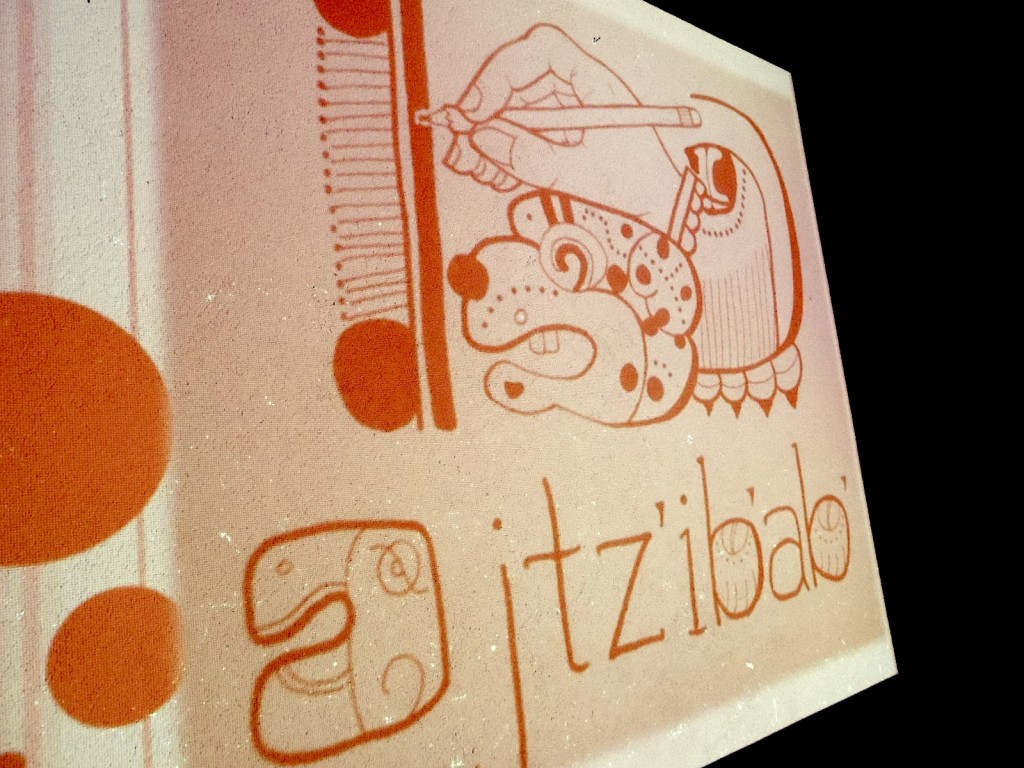
I was privileged to attend their inaugural meeting July 15 this year (Please visit Hector’s web site at http://kachochajtziib.blogspot.com.)
Nuestros amigos Héctor Xol Chok (maya q’eqchi’) y Beatriz Par (maya k’iché) recientemente constituyeron un nuevo grupo de epigrafistas mayas: Ajtz’ib’ab’.

Tuve el privilegio de asistir a su primera reunión el 15 de julio de este año (favor de visitar el sitio de internet de Héctor, en la siguiente dirección: http://kachochajtziib.blogspot.com).
In two previous blogs we have seen the Coban Group in action (Marina Rosales de Caal, Mario Sebastián Caal Jucub, and Yudy Mo’ Isem; January 10 and March 31 of this year). The photos in those two blogs were sent to us by Marina; I had not actually attended those workshops. Therefore it gave me great pleasure to stay at Marina and Mario’s home this year and to meet the players on their own field.
En dos blogs anteriores (10 de enero y 31 de marzo de este año), pudimos ver en acción al Grupo de Cobán (Marina Rosales de Caal, Mario Sebastián Caal Jucub y Yudy Mo’ Isem). Las fotografías que aparecen en estos dos blogs nos las envió Marina; en lo personal, no pude estar presente en ninguno de esos talleres. Por esta razón, me da muchísimo gusto poder quedarme en casa de Marina y de Mario este año y conocer a los participantes en su propio terreno.

One of the great joys of this current trip was to witness a workshop done completely in the Maya language. It was held in Yaxunah, Yucatán. (Not at the archaeological site, but in the town).
Having just published our memorial blog to last year’s congreso in Yucatán, we are now extremely happy to announce our plans for the 2014 congreso in Ocosingo, Chiapas.
Habiendo recientemente publicado nuestro blog en celebración del primer aniversario del Congreso del año pasado, que tuvo lugar en Yucatán, nos complace mucho anunciar ahora nuestros planes para el Congreso 2014, en Ocosingo, Chiapas.
Having just passed the one-year anniversary the 1st Congreso de Epigrafistas Mayas, we wrap up our coverage of that event and finish our reporting of the activities staged by that event’s participants in the months afterward. Here is a memorial of those five days in 2012. Future blogs will focus on current activities and our preparations for the 2014 congress, named II Congreso Internacional de Epigrafistas Mayas.
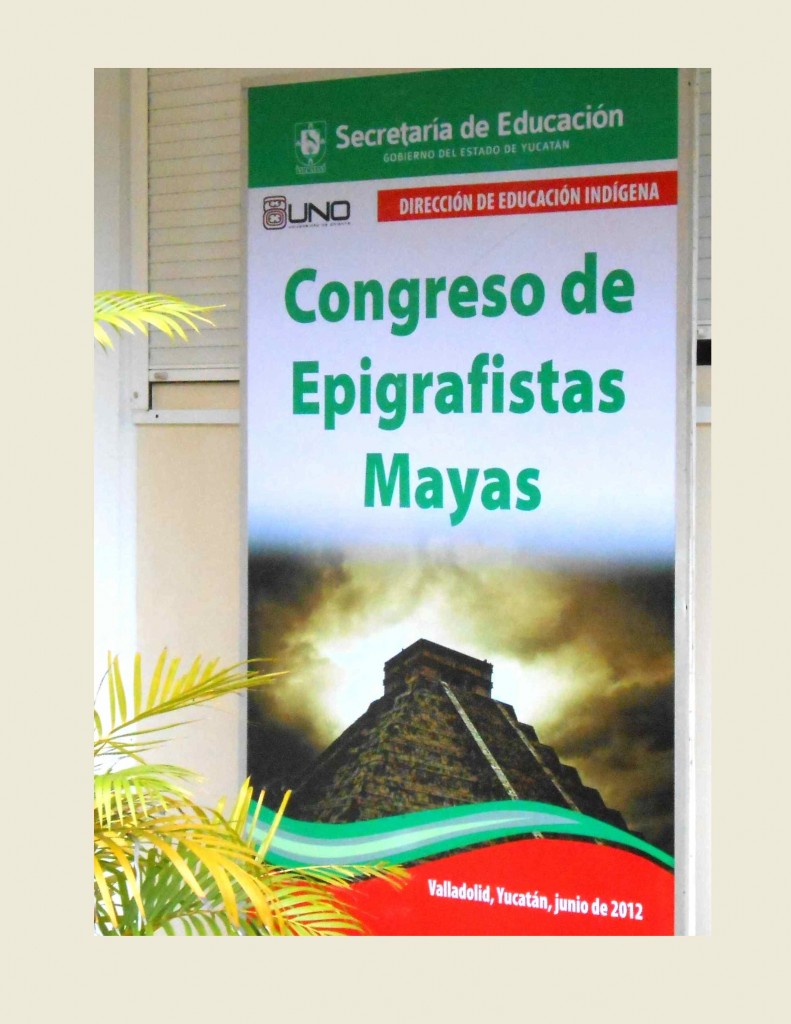
The grand event of 2012 that MAM was proud to co-sponsor with Universidad del Oriente and Dirección de Educación Indígena.
Habiendo apenas celebrado el primer aniversario del 1er. Congreso de Epigrafistas Mayas, damos por terminada nuestra cobertura de dicho evento y ponemos fin al informe de actividades que llevaron a cabo los participantes del mismo en los meses posteriores. Aquí hacemos un recuerdo de lo ocurrido en esos cinco días del año 2012. Este blog, de ahora en adelante, se centrará en las actividades que se están llevando a cabo en la actualidad y en nuestra preparación para el congreso de 2014: el II Congreso Internacional de Epigrafistas Mayas.
Workshop on Maya writing with a group of women and students from Santa Cruz Verapaz, Alta Verapaz, Guatemala
by
Augusto Tul Rax, participant in the Congress of Maya Epigraphers at the Universidad de Oriente, Valladolid, Yucatán, México, 2012.
On April 22 of this year a workshop was held for a group of candidates for Rixq’uun Ma ‘Muun (Maya Poqomchi’ Princess of Munchu), part of the celebration of the patron saint of Santa Cruz Verapaz, located in the department of Alta Verapaz, Guatemala.
The workshop taught participants the basic elements of ancient Maya writing, which was practiced by using the syllabary to write vocabularies, place names, and the first and last names of each of the participants.
In addition to the candidates for Rixq’uun Ma ‘Muun, the workshop was attended by some students, parents, and members of the commission that organized this cultural event.
Taller de Epigrafía Maya con un grupo de señoritas y estudiantes de Santa Cruz Verapaz, Alta Verapaz, Guatemala
por
Augusto Tul Rax, participante en el Congreso de Epigrafistas Mayas realizado en la Universidad de Oriente, Valladolid, Yucatán, México el año 2012.
El día 22 de abril del presente año se realizó un taller con el grupo de señoritas candidatas a Rixq’uun Ma’ Muun “Princesa Maya Poqomchi’ de Munchu” en el marco de la celebración de feria patronal de Santa Cruz Verapaz, departamento de Alta Verapaz.
El mismo consistió en la enseñanza aprendizaje de los elementos básicos de la escritura Maya antigua, se ejercitó el uso del silabario mediante la escritura de vocabularios, nombres de lugares, nombres y apellidos de cada uno de los participantes.
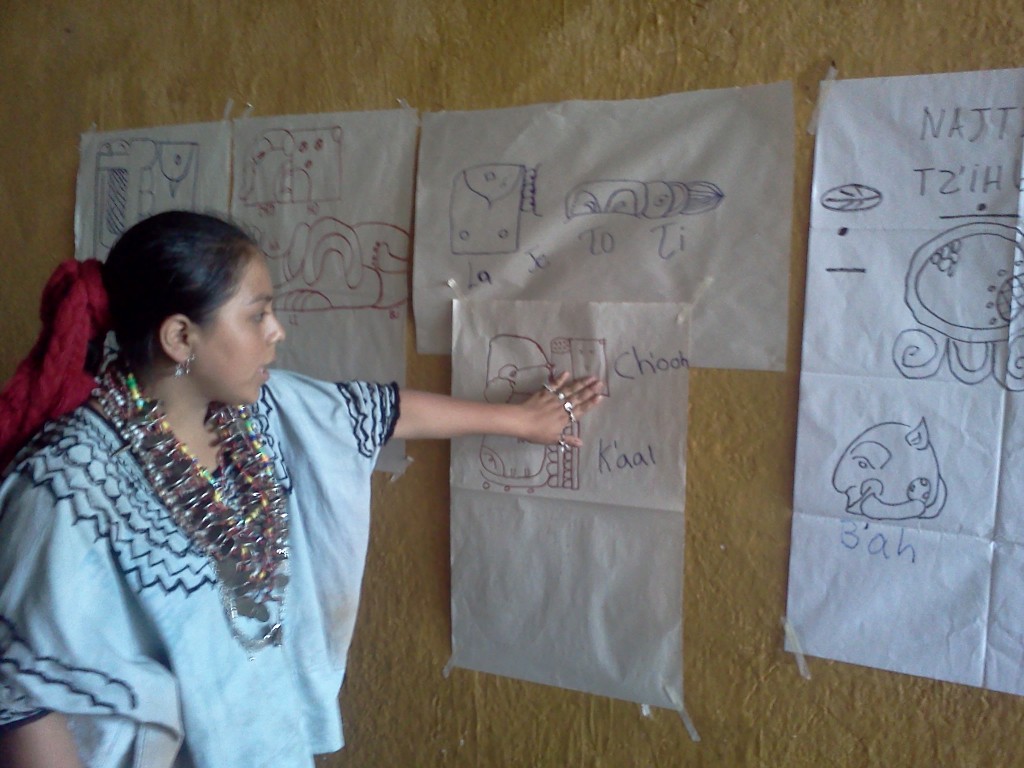 Además de las señoritas asistieron algunos estudiantes, padres de familia e integrantes de la comisión organizadora del evento cultural.
Además de las señoritas asistieron algunos estudiantes, padres de familia e integrantes de la comisión organizadora del evento cultural.